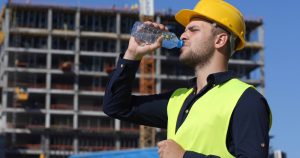Heat stress is a major concern for many different workplaces across the U.S. One important way to help workers deal with the heat is acclimatization, which is where the person becomes better able to handle hot conditions after gradual increased exposure to a hot environment.
The National Institute for Occupational Safety and Health (NIOSH) offers tips for how employers can ensure their workers are acclimatized before working in a hot environment, including:
- Gradually increase workers’ time in hot conditions over seven to 14 days.
- For new workers, the schedule should be no more than 20% of the usual duration of work in the heat on day 1 and no more than 20% increase on each additional day.
- For workers with previous experience, the schedule should be no more than 50% of the usual duration of work in the heat on day 1, 60% on day 2, 80% on day 3, and 100% on day 4.
- Closely supervise new employees for the first 14 days or until they are fully acclimatized.
- Non-physically fit workers require more time to fully acclimatize.
- Acclimatization can be maintained for a few days of non-heat exposure.
- Taking breaks in air conditioning will not affect acclimatization.
According to NIOSH’s acclimatization fact sheet, “the body will acclimatize to the level of work demanded of it. Simply being in a hot place is not sufficient. Doing light or brief physical work in the heat will acclimatize you ONLY to light, brief work. More strenuous or longer tasks require more acclimatization.”
Managers should have a formal acclimatization plan for employees working in the heat. Starting new employees at full intensity is not safe, according to NIOSH.
Most workers should be able to safely handle a full workload after four days of gradual increase, even though they will usually not be acclimatized yet, according to the fact sheet. Most people will continue to see improvements in heat tolerance for up to two weeks after exposure starts. Sudden shifts in work intensity or sudden increases in environmental temperature can increase the risk of heat illness, even for acclimatized workers.

